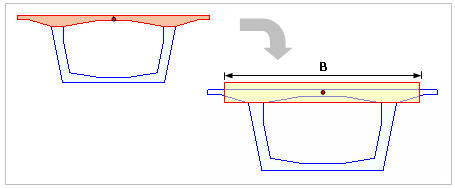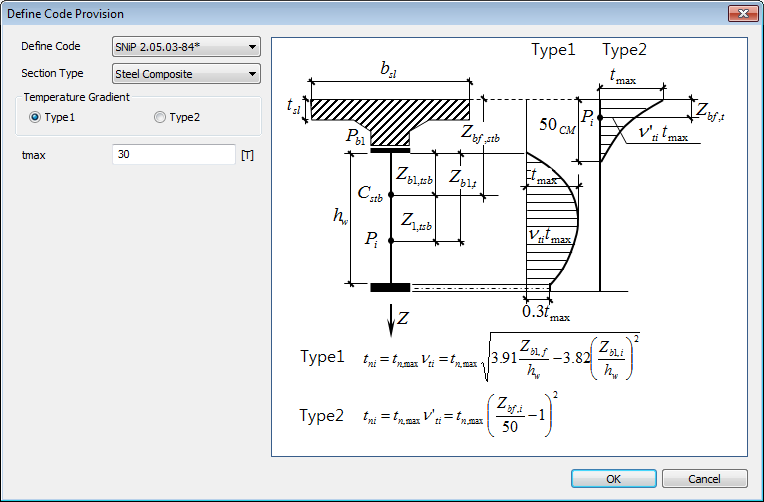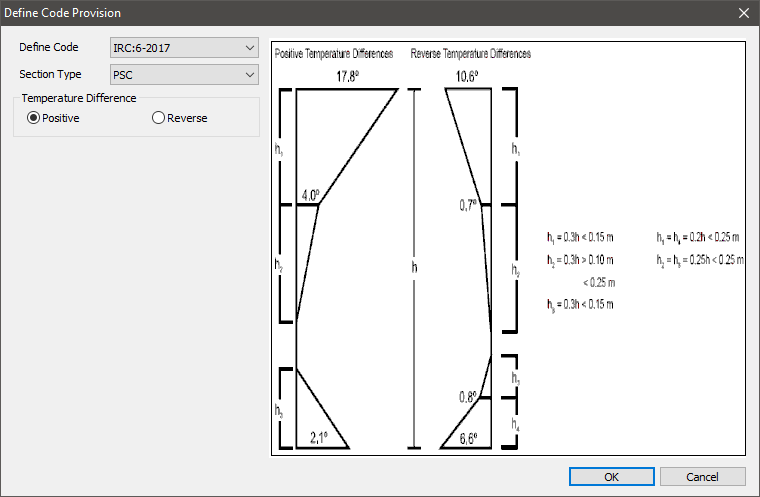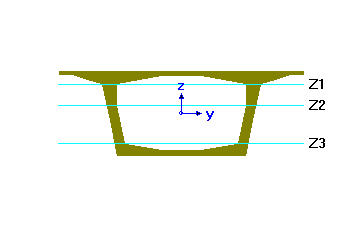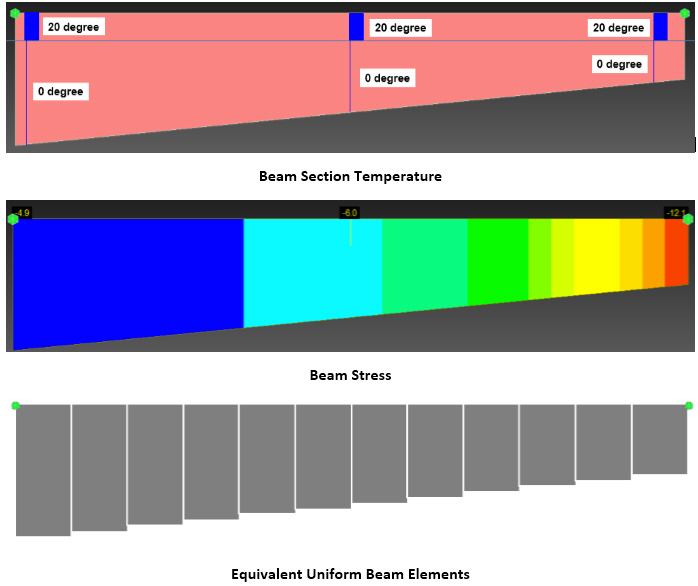Beam Section Temperatures
Enter the temperature differences between specific locations of beam for thermal stress analysis. The vertical temperature gradient is considered in concrete and steel superstructures with concrete decks, which are subject to temperature difference due to direct sun light and shade.
A temperature difference may be also defined by the Temperature Gradient function. In case of Temperature Gradient, only the temperature difference between the top and bottom of a section can be entered. However, in case of Beam Section Temperature, temperature differences for certain locations in a section can be entered.


General Section Type
If a section for which a temperature difference is considered is not a rectangle, the section should be transformed into an equivalent rectangular section, which produces the identical moment due to the temperature load. And then the user needs to input the width and height of the equivalent rectangular section.
PSC Section Type
For PSC sections (except for Value type PSC sections) and Composite sections, which are relatively complex but frequently used, the program automatically defines the temperature load by dividing and transforming the corresponding zone. In case of PSC section as shown in the figure above, the transformed rectangular zone can be automatically calculated by selecting the PSC/Composite option instead of manual calculation.
From the Main Menu select Load > Temp/Prestress > Beam Section Temp.
 Load Case Name
Load Case Name
Assign the load
case name. Click ![]() to
the right to enter additional load cases and modify or delete
existing load cases.
to
the right to enter additional load cases and modify or delete
existing load cases.
 Load Group Name
Load Group Name
Select the desired
Load Group Name. Click ![]() to the right to enter
additional load group names and modify or delete existing load
group names.
to the right to enter
additional load group names and modify or delete existing load
group names.
 Options
Options
Add: To enter new or additional partial temperature loads to beam elements
Replace: To replace previously entered temperature loads
Delete: To delete previously entered temperature loads
 Section Type
Section Type
General: Select when inputting the temperature difference between the top and bottom of a General Section.
Note
If the section for which the temperature difference is to be considered is not a square, the section should be transformed into an equivalent square section having the same area and centroid as the original section.
PSC: Select when inputting a temperature difference in a PSC section type beam element
When General Section Type is selected
|
When PSC Section Type is selected.
|
![]() Calculation of Beam Section Temperatures
in PSC Section and Composite Section (Composite T, Composite I)
Calculation of Beam Section Temperatures
in PSC Section and Composite Section (Composite T, Composite I)
Divide the section to which the temperature load is applied into ten segments (Max. height = 0.1m). Here, the section must be divided at curved positions, boundary of the Part and boundary between Flange and Web in the composite section as shown in the figure below. Calculate property of each segment using the same procedure performed in General Type. The top and bottom of the segment rectangle corresponds to H1 and H2 in the General Type, respectively. The temperature of each segment is calculated assuming that the temperature load applied at T1 and T2 varies linearly. The final result is calculated by combining the results from each segment. This is equivalent to applying the temperature load ten times in the original method.
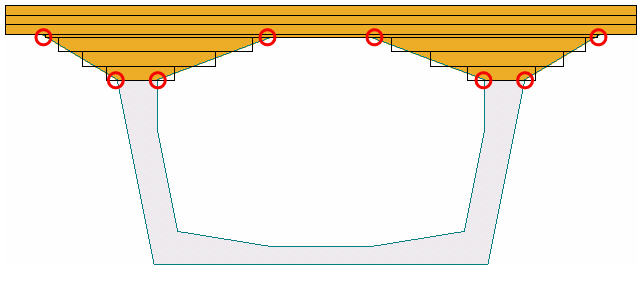
The method of calculating Beam Section Temperatures for PSC Section Type
![]() Revision of
Civil 2014 (v2.1)
Revision of
Civil 2014 (v2.1)
